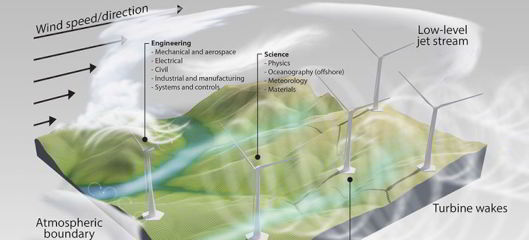
Views: 4
In a call for action from international wind power researchers, published in the scientific journal Science, the challenges of wind power are summarised in three points. Ola Carlson, Professor of Sustainable Electric Power Production at Chalmers University of Technology, has been the only Swedish researcher involved in the work to formulate the challenges of the future.
Courtesy Chalmers University by Yvonne Jonsson: “Every country around the world is basically facing similar research challenges regarding wind power development”, says Ola Carlson. “It is about creating the conditions for wind power to take a stronger position as a cost-effective and reliable renewable power source. Wind power has the potential to increase its share of the world’s power supply and to contribute to carbon dioxide-free electricity production as a substitute for fossil fuels.”
Behind the call for action are 70 wind power scientists from 15 countries, having joined forces on the initiative of the US Department of Power’s National Renewable Power Laboratory (NREL).
Higher, bigger and more stable
The first challenge is to increase the understanding of how the physical conditions of the wind affect the wind turbines, in terms of production capacity and lifetime expectancy.
“By building higher wind turbines, more energy from the winds can be utilised. New plants may reach 250 metres, and, in the future, we will see heights up to 300  metres”, says Ola Carlson. “But higher plants also mean new wind conditions and other strains to consider. Therefore, we need to increase our knowledge of the effects of air currents.”
metres”, says Ola Carlson. “But higher plants also mean new wind conditions and other strains to consider. Therefore, we need to increase our knowledge of the effects of air currents.”
Wind turbines are the largest rotating machines in the world today. As the plants become larger, new materials and manufacturing processes need to be developed, as well as systems for handling for example transportation and recycling.
“The second challenge is the structural dynamics in terms of the materials chosen and the construction design”, continues Ola Carlson. “Carbon fibre, for example, is an interesting future material for the wings, being both light and strong.”
Wind power’s third challenge focuses on the need to maintain stability in the electricity grid as the proportion of weather-dependent production increases.
“It is quite possible to equip the wind turbines with functions to provide extra active power to balance the electricity grid during frequency fluctuations”, says Ola Carlson. “There is also research showing that controlling the reactive power of wind turbines leads to increased grid stability.”
Challenges that engage
Several of the challenges involve researchers at the Swedish Wind Power Technology Centre (SWPTC), hosted by Chalmers with Ola Carlson as Director. The goal of the centre is to optimize the capacity of wind power plants and make production and operation more cost-effective. The method is to combine theory and practice through close collaboration between industry and academia.
“I think the call for action focuses on exciting future challenges in wind power. My hope is that young researchers are attracted by this and that the call has enough weight to impact the funding for eolic research at a high international level”, concludes Ola Carlson.
Although energy systems and energy policies vary from country to country, the research challenges are the same, for making wind power a significant part of the solution to the energy and climate challenges.
Text: Yvonne Jonsson
Illustration: Josh Bauer, NREL
Portrait photo: Oscar Mattsson
For more information contact
Ola Carlson, Professor of Sustainable Electric Power Production at the Department of Electrical Engineering at Chalmers University of Technology
Related article: Model and manage the changing geopolitics of energy